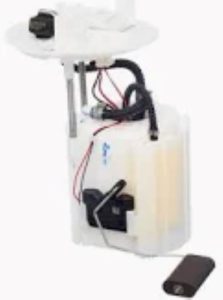Fuel pump flow rates determine the quantity of fuel a pump can supply to the engine in time (usually measured in liters-per-hour, or LPH). Passenger car fuel pumps, on average flow in the 100-150 LPH range which is good for providing the proper amount of fuel to keep your engine running efficient at pressures between 40 and 60 PSI. With high-performance applications that draw more fuel from the engine, flow rates over 255 LPH are seen and can reach 340 LPH in the case of turbocharged or supercharged engines demanding higher quantities of fuel to sustain power output.
To keep engine performance, flow rates are important. Even just a 10% drop in flow rate can reduce horsepower and cause symptoms as severe as engine misfires or lack of acceleration. A fuel pump that's supposed to flow 150 LPH but is only flowing 135 LPH because of wear or blockage can result in fuel starvation, particularly at high engine speeds or with a high load on the engine.
High performance fuel pumps are designed to accommodate larger flow rates and mounted to engines that have been upgraded for racing or high horsepower applications. Operating at over 70 PSI, these pumps provide a delivery rate of up to 25% more than standard units. Take a high-performance 255 LPH fuel pump — this is generally more than enough to support an engine that produces upwards of 500hp, meaning whatever the case may be, you can have complete peace of mind in knowing your motor is receiving plenty of fuel when demands are highest. Without enough flow, the most sophisticated engine upgrades won't help fully capitalize on performance modifications.

Obviously, the price you pay for different flow rates of a fuel pump will be dependent on what your vehicle needs. A pump costs between $100 and $300 for a standard one, while the high-performance ones can be as expensive as $300 to $600, depending on the flow rate and build quality. They are constructed to handle the pressures associated with feeding more fuel while still keeping load off of the vehicles electrical system. Pumps over 12 amps can cause voltage drops and reduce flow efficiencies by 10% to 15%.
This came to light in real-world events, such as the over 150,000 vehicle recall that happened last year due to issues surrounding faulty fuel pumps which ended up underscoring why proper flow rates are vital. The defective pumps could provide diminished flow rates and can cause stalling and engine performance issues for the affected vehicles. This incident highlights the importance of doing annual fuel pump flow tests to ensure that everything is operating properly and safely.
Visit Fuel Pump to learn more about Fuel Pump flow rates and performance impacts on your car.
